44
Artwork in focus
Dr. Evan Freeman
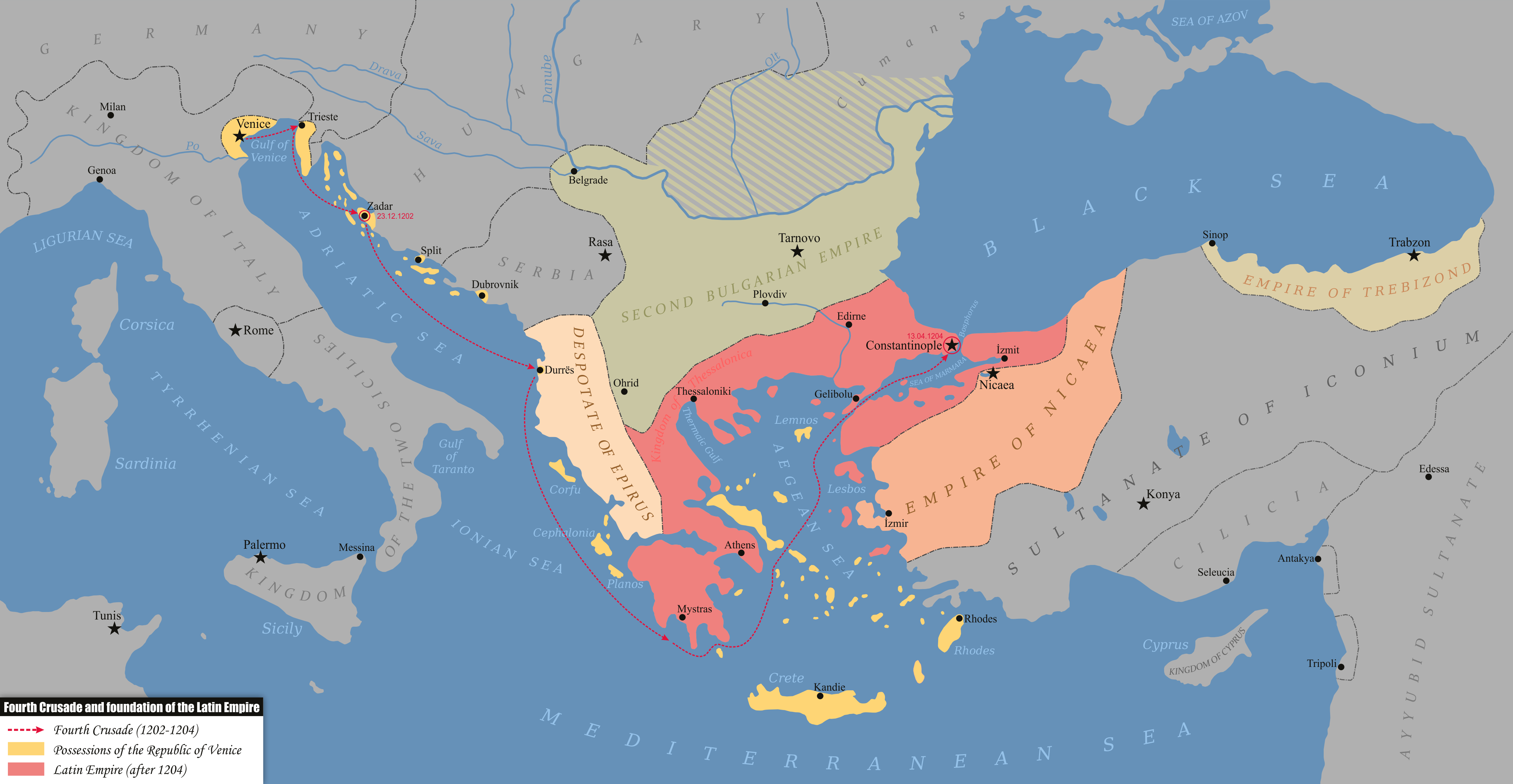
Constantinople, lost and reclaimed
In 1204, a momentous event forever changed the history of the Eastern Roman “Byzantine” Empire. Western Europeans embarking on the Fourth Crusade diverged from their path to Jerusalem and sacked and occupied the Byzantine capital of Constantinople (modern Istanbul). The crusaders established a “Latin Empire” in Byzantine territory and subjected Byzantine Christians to the religious authority of the Pope in Rome. The crusaders also converted Hagia Sophia — Constantinople’s great cathedral, built in the sixth century by emperor Justinian—into a Latin (Catholic) church.
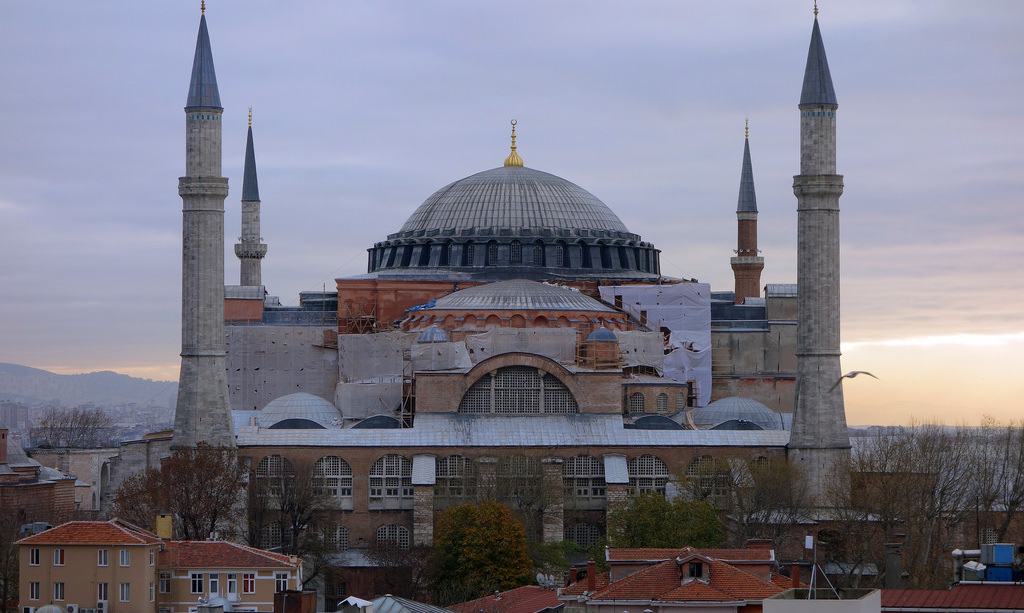
In 1261, the Byzantines recaptured their capital and crowned Michael VIII Palaiologos as emperor, inaugurating what historians refer to as the Late Byzantine—or Palaiologan—period. A new Orthodox patriarch of Constantinople was enthroned in Hagia Sophia in September 1261, and Justinian’s great church was used for the Byzantine rite once again.
The Deësis mosaic in Hagia Sophia
Under Latin occupation, the capital and many of its churches fell into disrepair, and so the Byzantines began restoring Constantinople and its churches. Emperor Michael VIII Palaiologos, responsible for reclaiming the Byzantine capital, is likely responsible for installing a monumental new mosaic of the Deësis in the south gallery of Hagia Sophia—a part of the church traditionally reserved for imperial use—not long after reclaiming Constantinople in 1261. The mosaic was probably part of a larger restoration project in the church of Hagia Sophia.
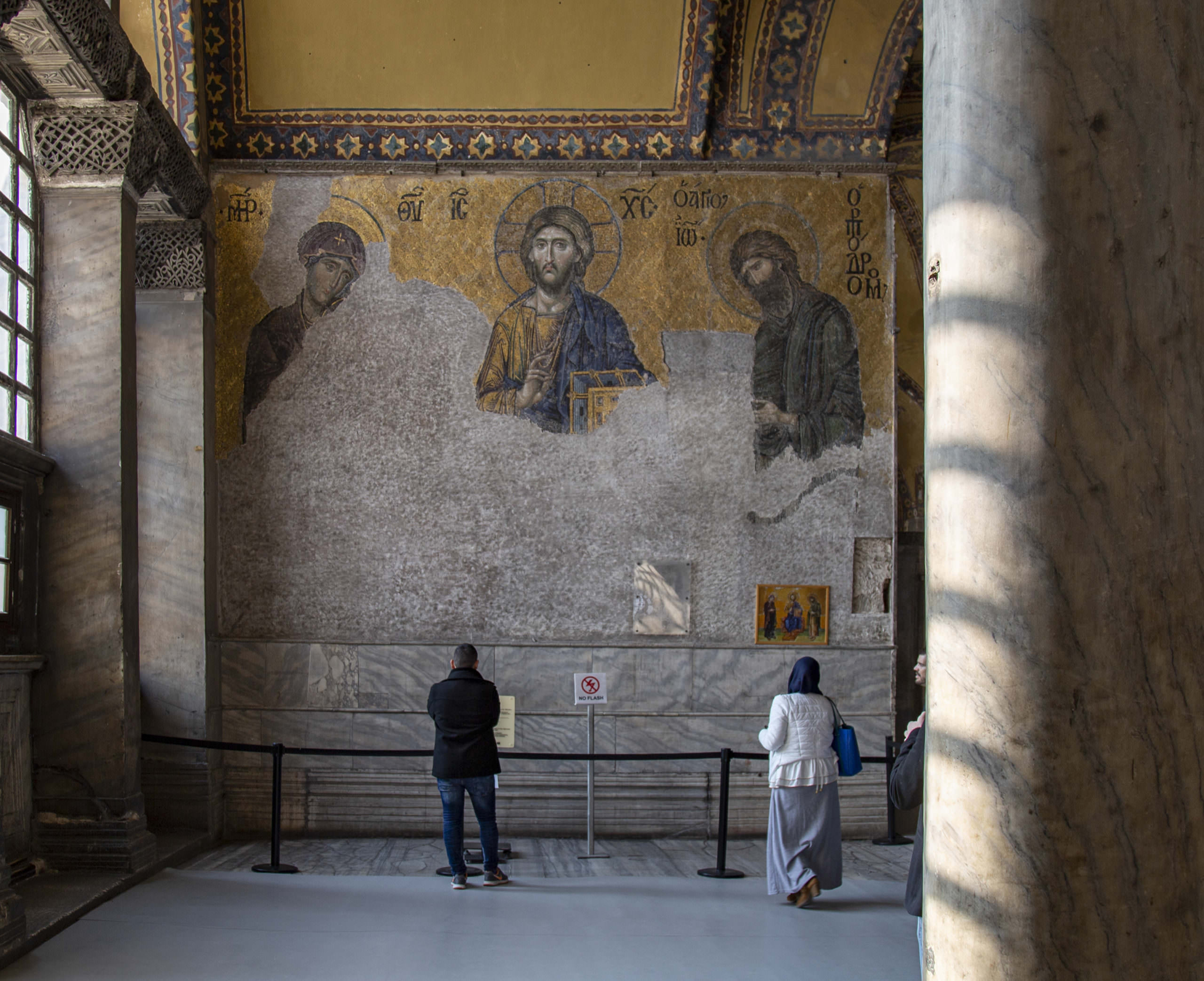
The monumental Deësis mosaic depicts Christ flanked by the Virgin Mary and John the Baptist approximately two and a half times larger than life. The looming stature of these three figures reflects their importance in Byzantine culture. Christ, the Son of God, appears at the center of the composition and is labeled, IC XC, the Greek abbreviation for “Jesus Christ.” The Byzantines viewed the Virgin Mary—Christ’s mother—as a powerful protector. She appears at Christ’s right hand and is labeled, MP ΘY, “Mother of God.” John was a prophet and relative of Christ, whose preaching and baptizing prepared the way for Christ’s ministry in the Gospels. He appears on Christ’s left with the label, “Saint John the Forerunner.”
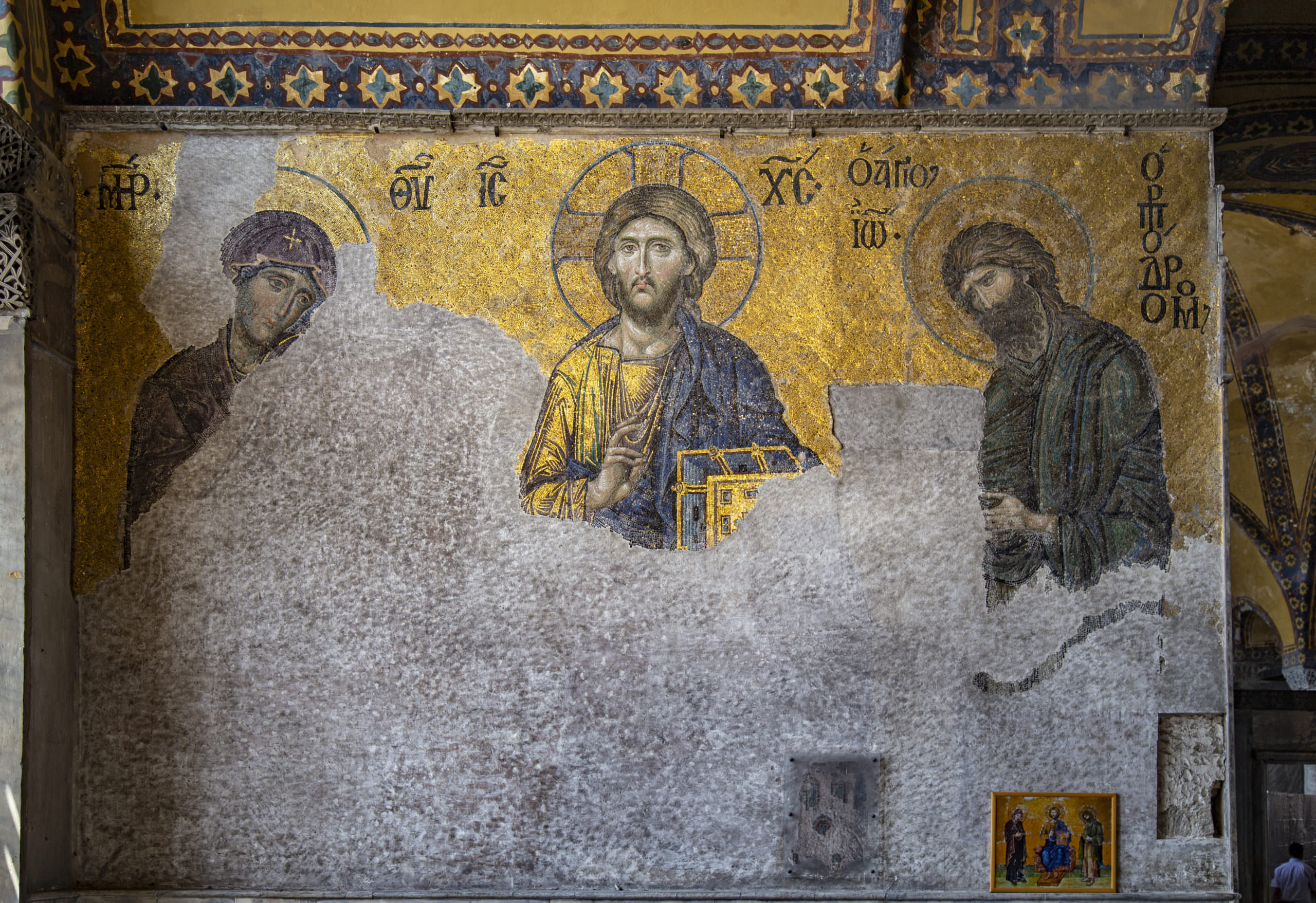
In the mosaic, Christ sits upon a jeweled throne like an emperor or judge (although most of the throne and bottom half of the mosaic have been lost). The Virgin and John turn inward toward Christ in a three-quarter view, and would have originally extended their hands toward Christ in a pleading gesture. This type of image is referred to as a deësis (δέησις), which means “entreaty,” suggesting an act of asking, pleading, begging. However, this title does not actually appear in the mosaic, and scholars debate whether the Byzantines actually used this term much to describe such images. This type of image reflects the Byzantine belief that the hierarchical order of their empire on earth mirrored heaven above.
In the Deësis, the Virgin and John appear like courtiers in the heavenly court, asking God to have mercy on humanity. It is not hard to imagine why such an image of intercession and divine mercy might appeal to the new ruler of an empire still on precarious footing on the world stage.
The subject of the Deësis is common in art in a variety of media from the Middle Byzantine period onward, often employing a similar composition to that found in Hagia Sophia. But the Deësis was also highly flexible: its figures could be rearranged, replaced by others, or expanded to include additional saints. This is the case with the mid-10th century, ivory Harbaville Triptych, in which Christ, the Virgin, and John—who appear in the top center with angels—are surrounded by a variety of saints.
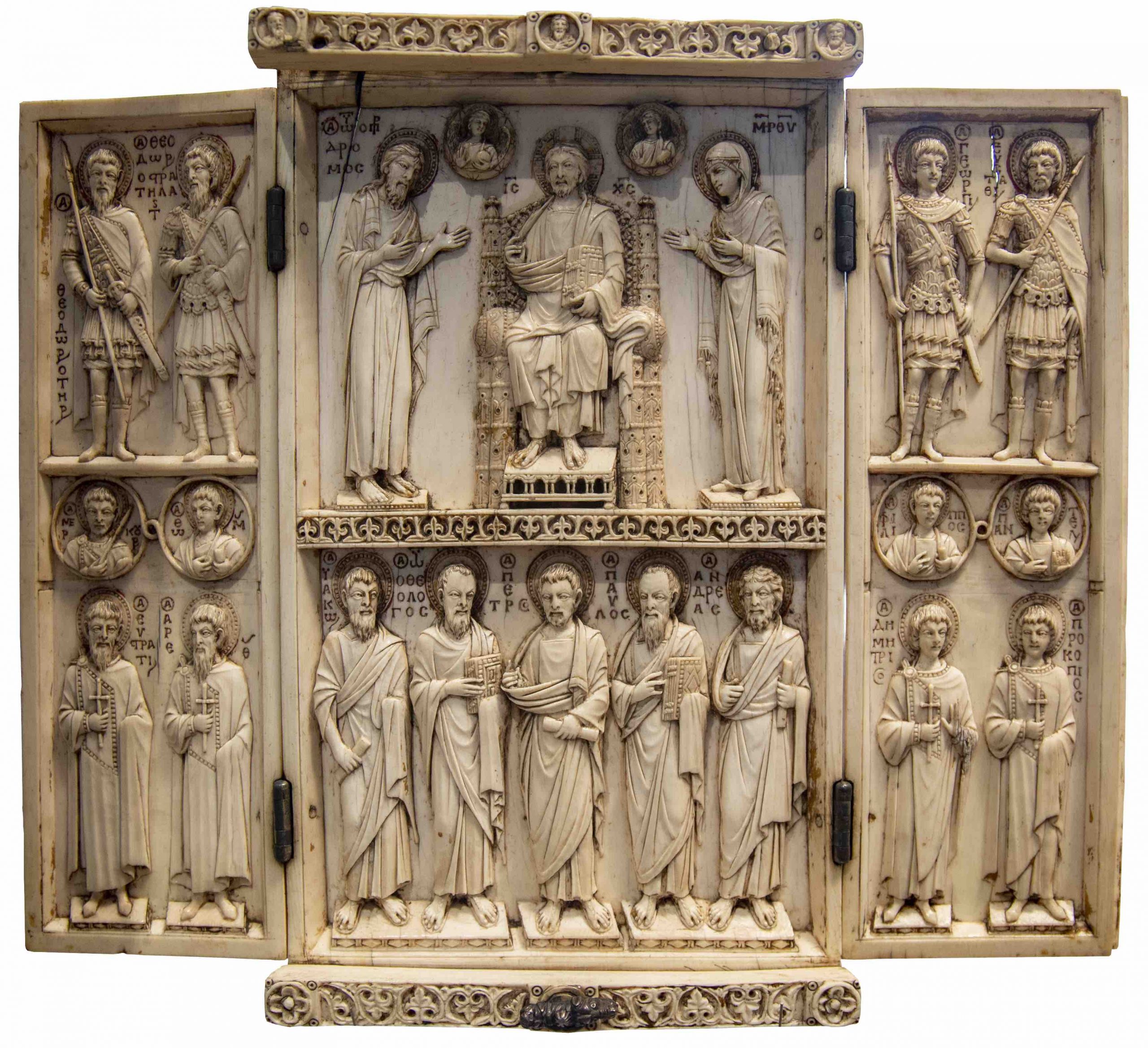
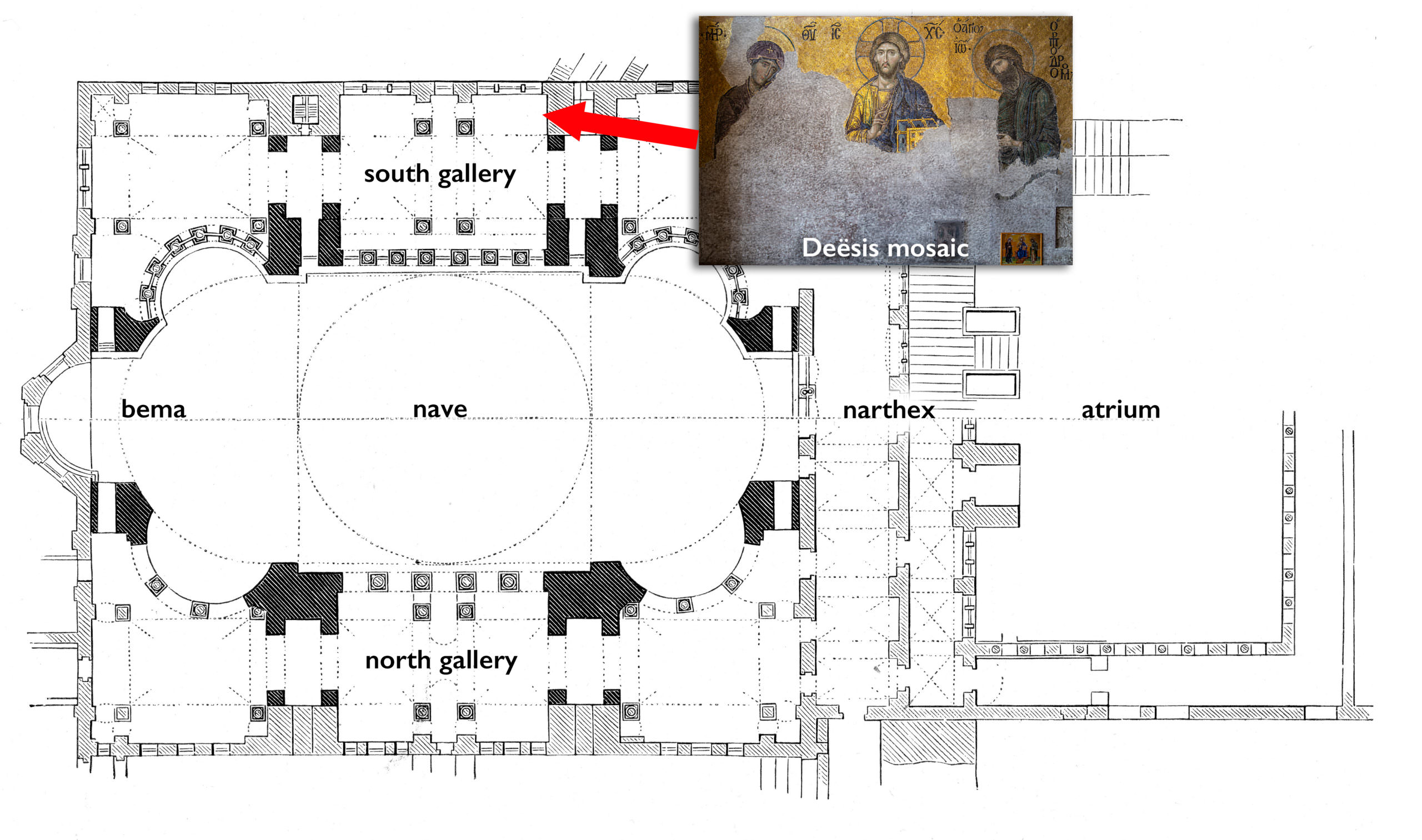
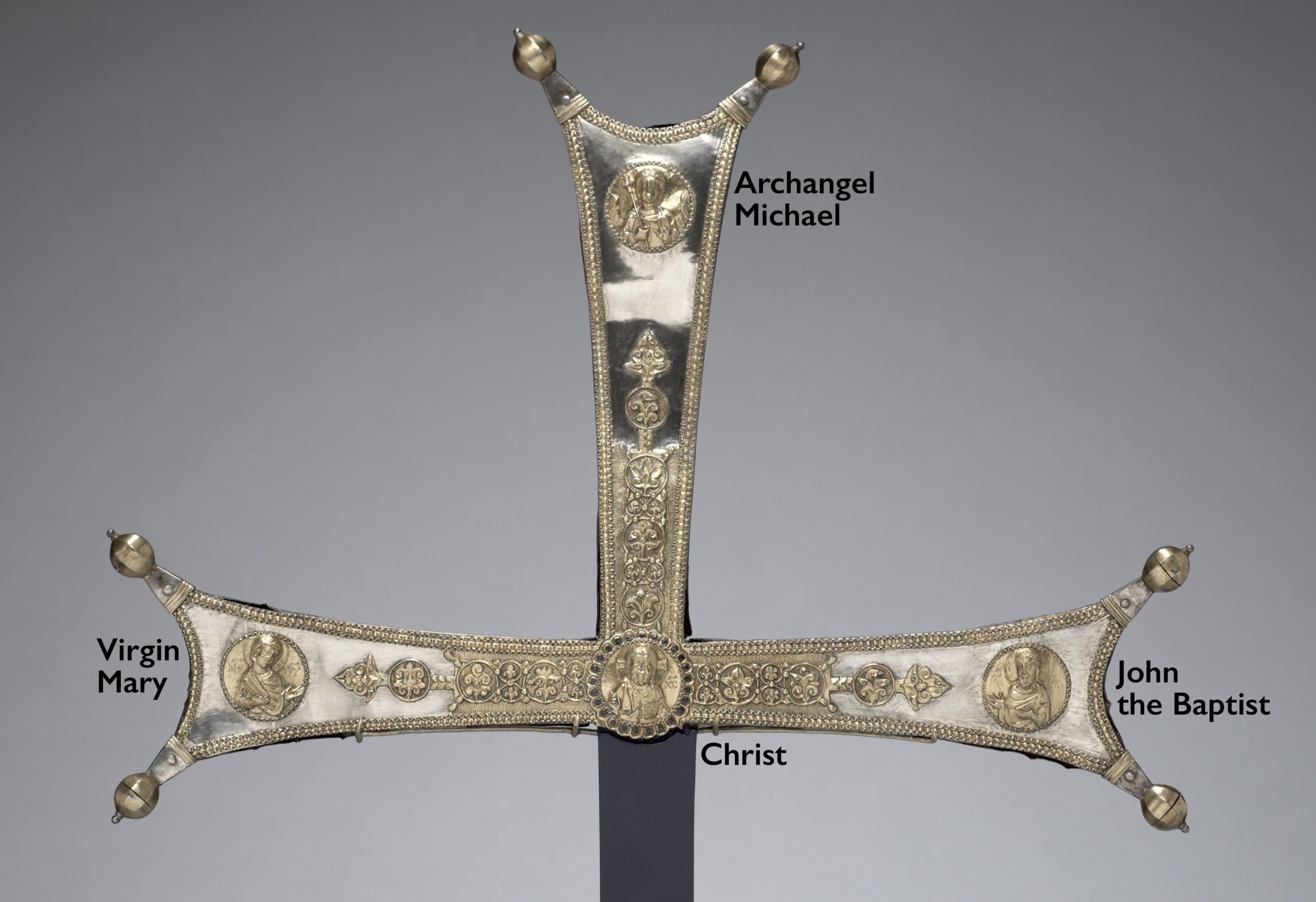
Additionally, the Deësis was often incorporated into larger compositions, such as templon beams and images of the Last Judgment. Scholars have debated possible meanings of the Deësis, sometimes understanding the Virgin and John as witnesses to Christ’s divinity and at other times emphasizing their role as intercessors on behalf of humankind.
Mosaics and light
The Hagia Sophia Deësis is responsive to the lighting conditions where it is located. Within the image, light appears to shine on the figures from the left, casting shadows to the right. This pictorial light source corresponds with the actual light source of the window on the southern wall beside the mosaic.
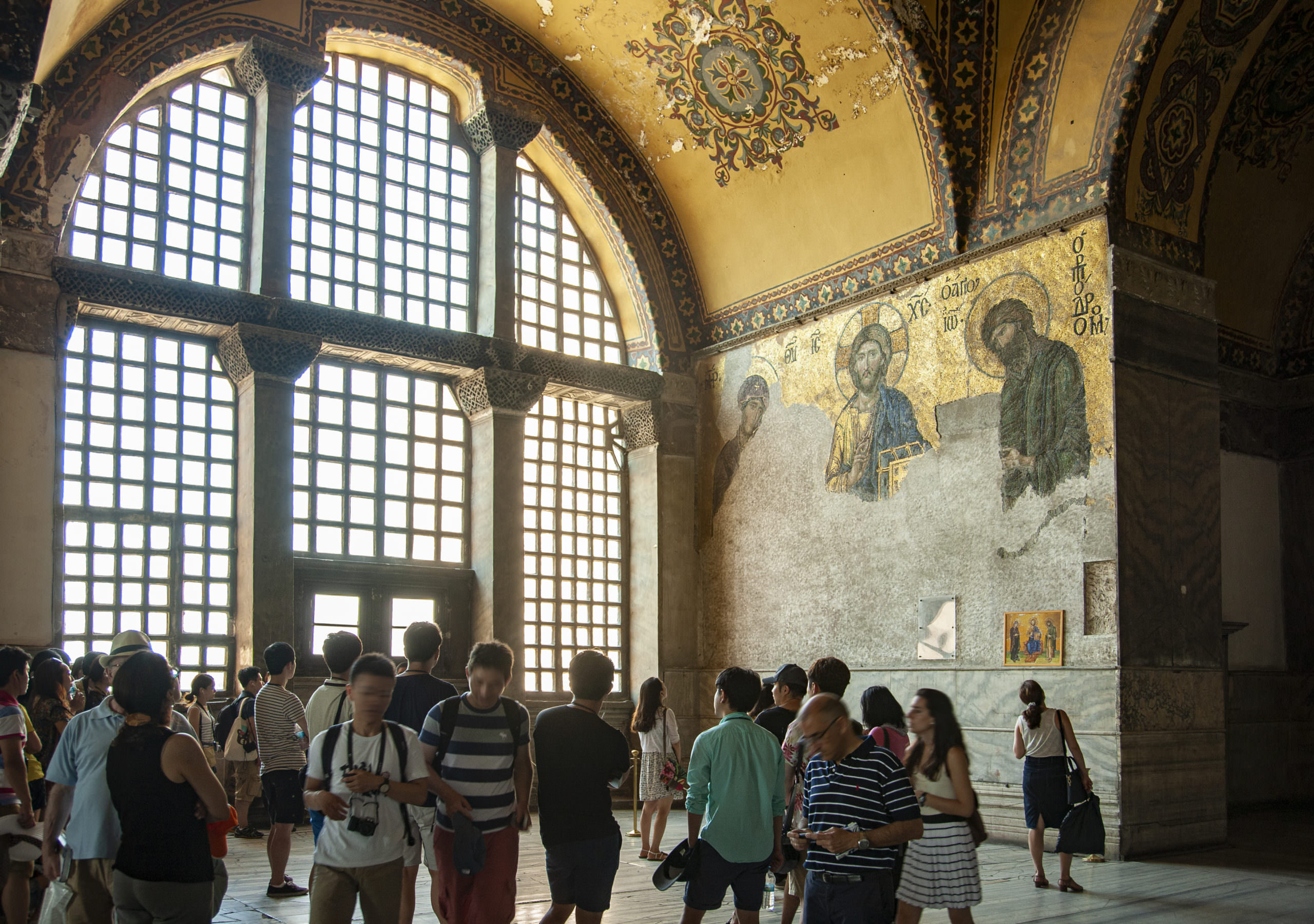
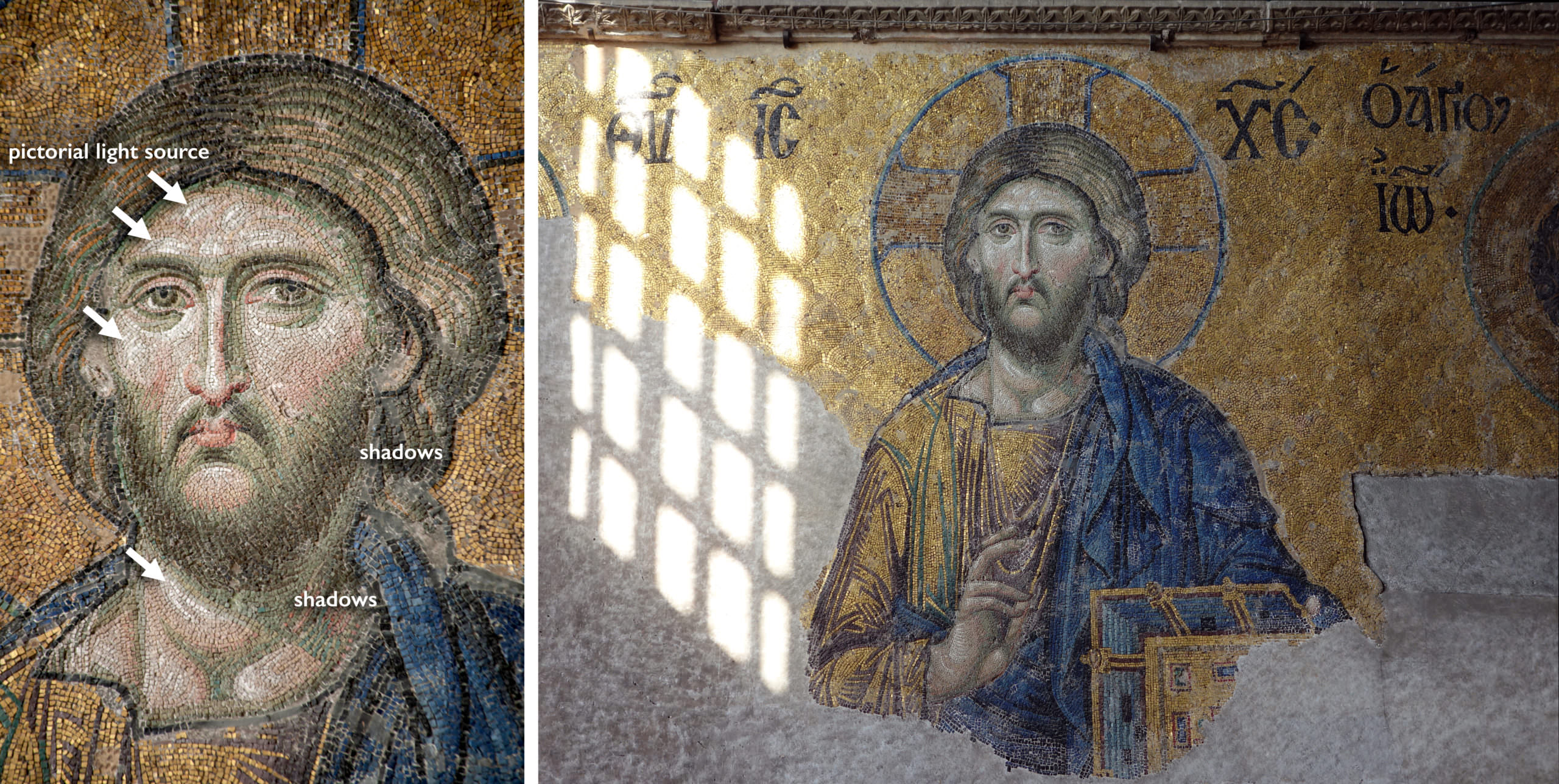
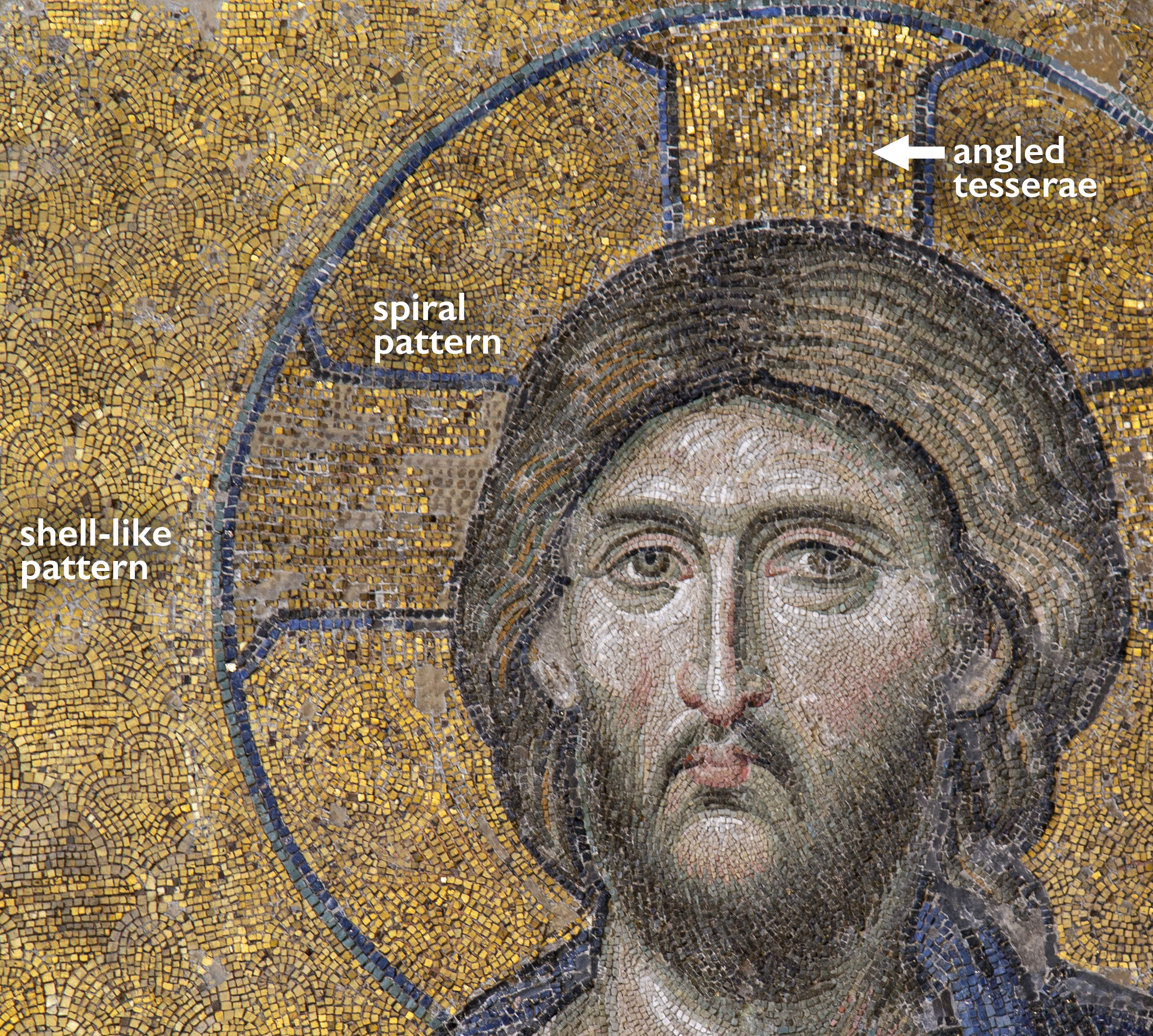
As a result, light and shadow seem to behave the same within the image and in the physical space the image inhabits, a feature that heightens the naturalism in the mosaic.
The artists who created this mosaic also considered how individual tesserae would reflect light. The gold tesserae that compose the background are arranged in a shell-like pattern and those in Christ’s halo seem to swirl. The tesserae within the cross in Christ’s halo are angled so they will reflect the light differently from the rest of the gold ground, highlighting the cross.
Late Byzantine naturalism
The Deësis at Hagia Sophia illustrates a broader tendency toward naturalism (imitation of the visible world) in Late Byzantine art. Let us compare the image of Christ in the Hagia Sophia Deësis with a Middle Byzantine mosaic of Christ at Hosios Loukas Monastery in Boeotia, Greece, which dates to the eleventh century.
The two images both follow the same Byzantine conventions for depicting Christ, who holds a Gospel book in his left hand, blesses the viewer with his right hand, and wears a blue mantle and a tunic with gold highlights in both images. But in the Middle Byzantine mosaic at Hosios Loukas, Christ’s features are simplified. The artist relies heavily on lines to articulate form. As a result, Christ’s body may appear somewhat flat and even cartoon-like to our eyes. Certain aspects of the Deësis at Hagia Sophia—such as highlights and drapery folds—are similarly linear. But other elements of the Deësis demonstrate a new tendency toward naturalism. At Hagia Sophia, Christ is more anatomically accurate. The artist has also used modeling—carefully arranging light and dark tesserae—to create a sense of three-dimensional form. And a greater modulation of hues has produced more convincing skin tones.
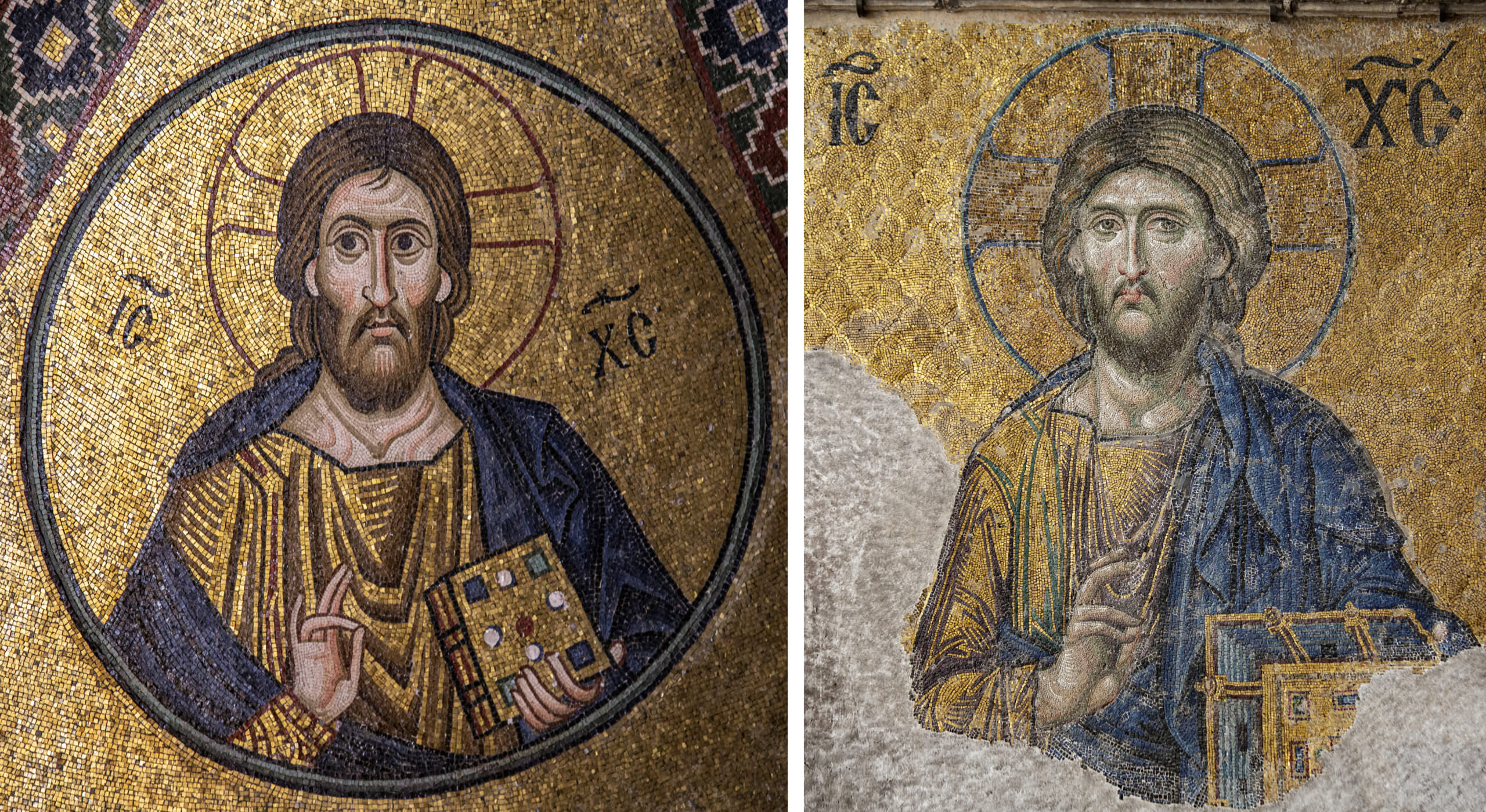
Neither the origins of the artist(s) who created the Deësis mosaic, nor the reasons for the mosaic’s naturalism, are easy to explain. But it should be noted that this tendency toward naturalism is part of a larger trend in Late Byzantine art, which may also be observed, for example, in the wall painting of the Dormition of the Virgin at Sopoćani Monastery in Serbia, also dated to the 1260s.
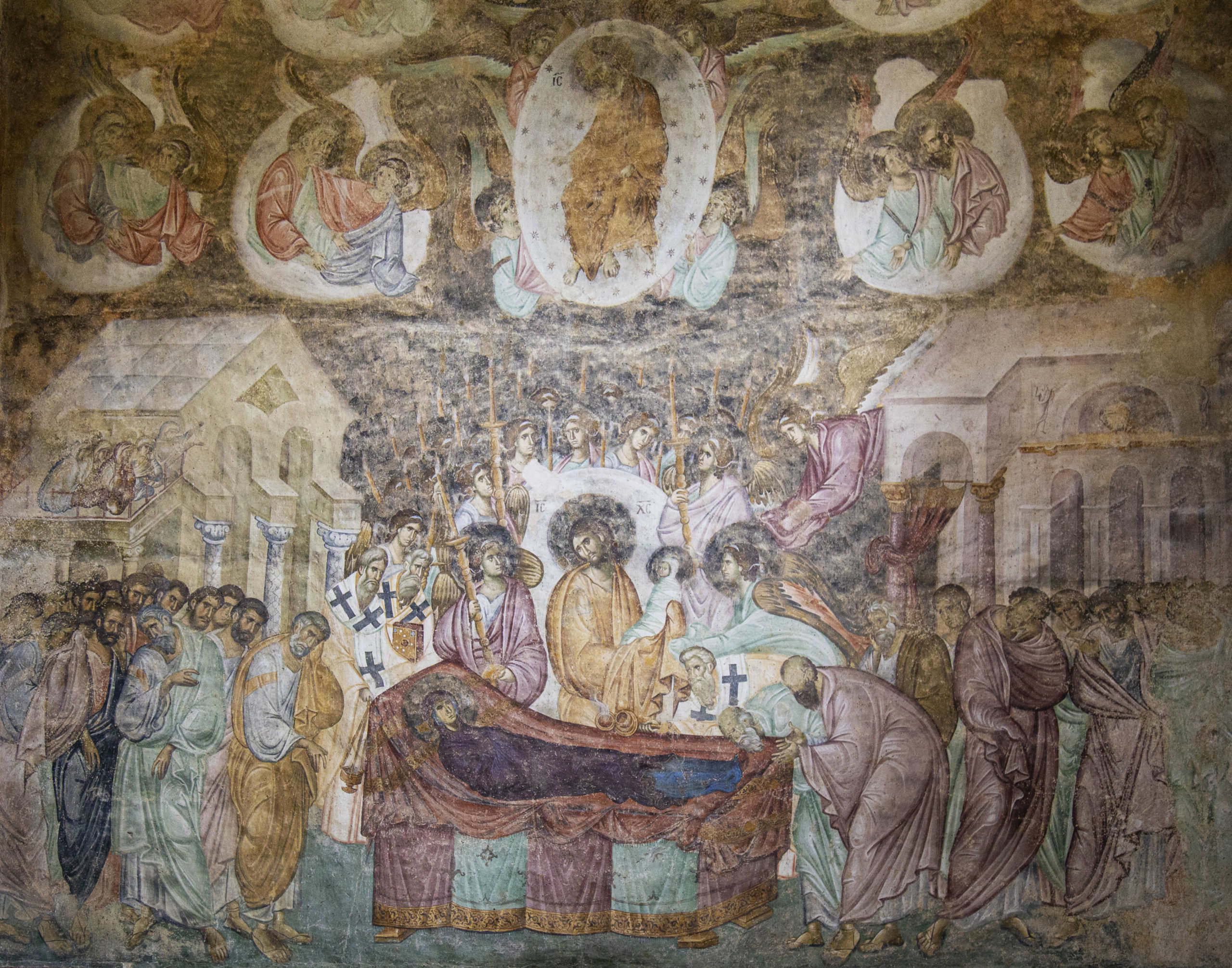
This attention to naturalism in the Late Byzantine art also corresponds with a similar interest in naturalism among some Italian artists like Duccio, Cimabue, and Giotto who are associated with the beginnings of the Italian Renaissance. Active in the late thirteenth and early fourteenth centuries—not long after the creation of the Deësis in Hagia Sophia—their paintings reveal similar attention to human anatomy and the modeling of form.
Today, the Deësis mosaic in Hagia Sophia still stands as a reminder of the moment when the Byzantines reclaimed their capital from the Latins and when the arts—and an interest in naturalism—flourished.
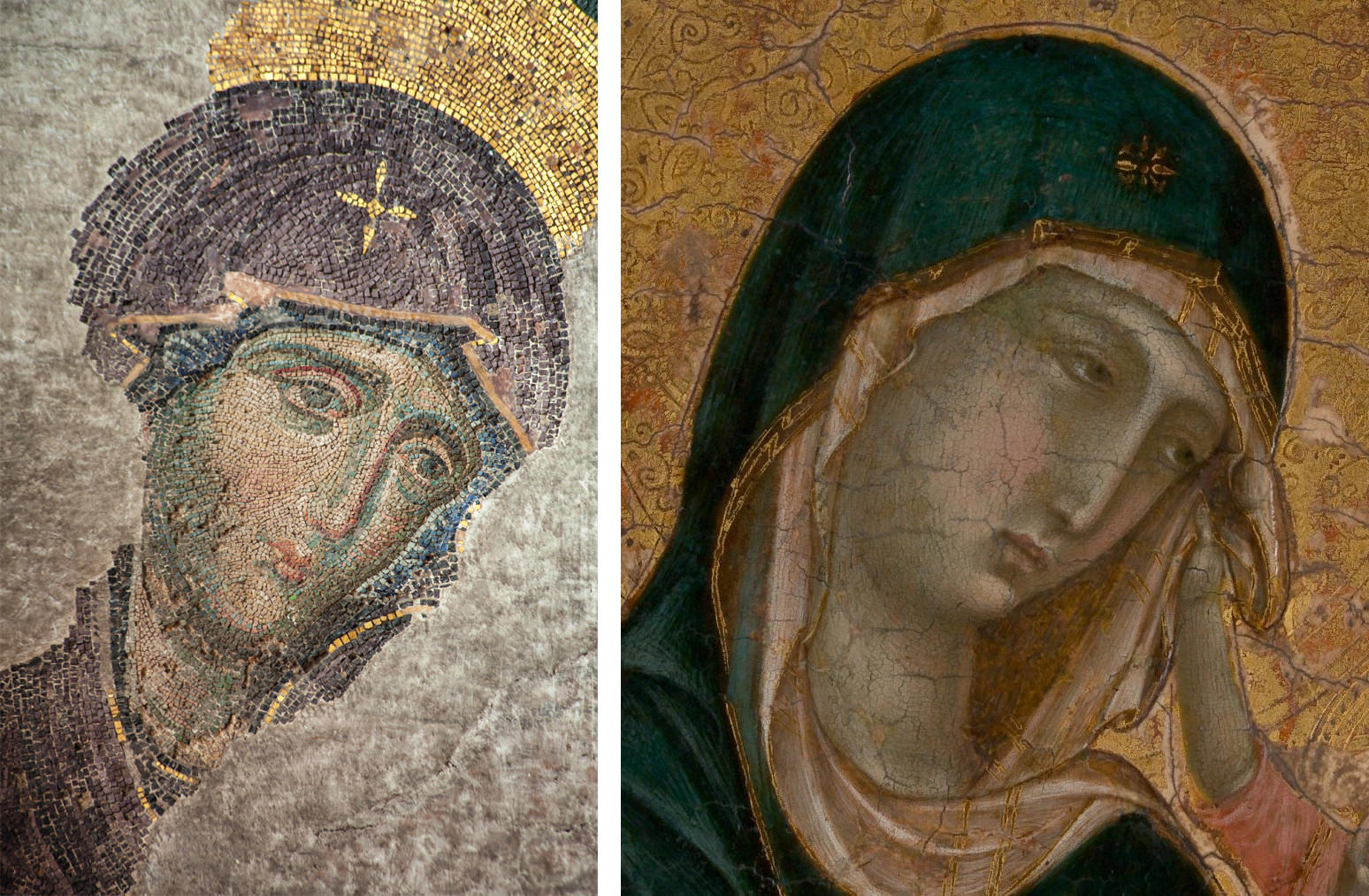
Additional resources
Painted copy of Deesis Mosaic at The Met
<https://www.metmuseum.org/art/collection/search/467825>
Annemarie Weyl Carr, “Deesis,” in The Oxford Dictionary of Byzantium, ed. Alexander P. Kazhdan, et al., vol. 1 (Oxford and New York: Oxford University Press, 1991), 559–600.
Cecily J. Hilsdale, Byzantine Art and Diplomacy in an Age of Decline (Cambridge: Cambridge University Press, 2014), 96–99.
Robin Cormack, “The Mother of God in the Mosaics of Hagia Sophia at Constantinople,” in Mother of God: Representations of the Virgin in Byzantine Art, ed. Maria Vassilaki (Milan: Skira, 2000), 118–123.
Anthony Cutler, “Under the Sign of the Deēsis: On the Question of Representativeness in Medieval Art and Literature,” Dumbarton Oaks Papers 41 (1987): 145–154.
